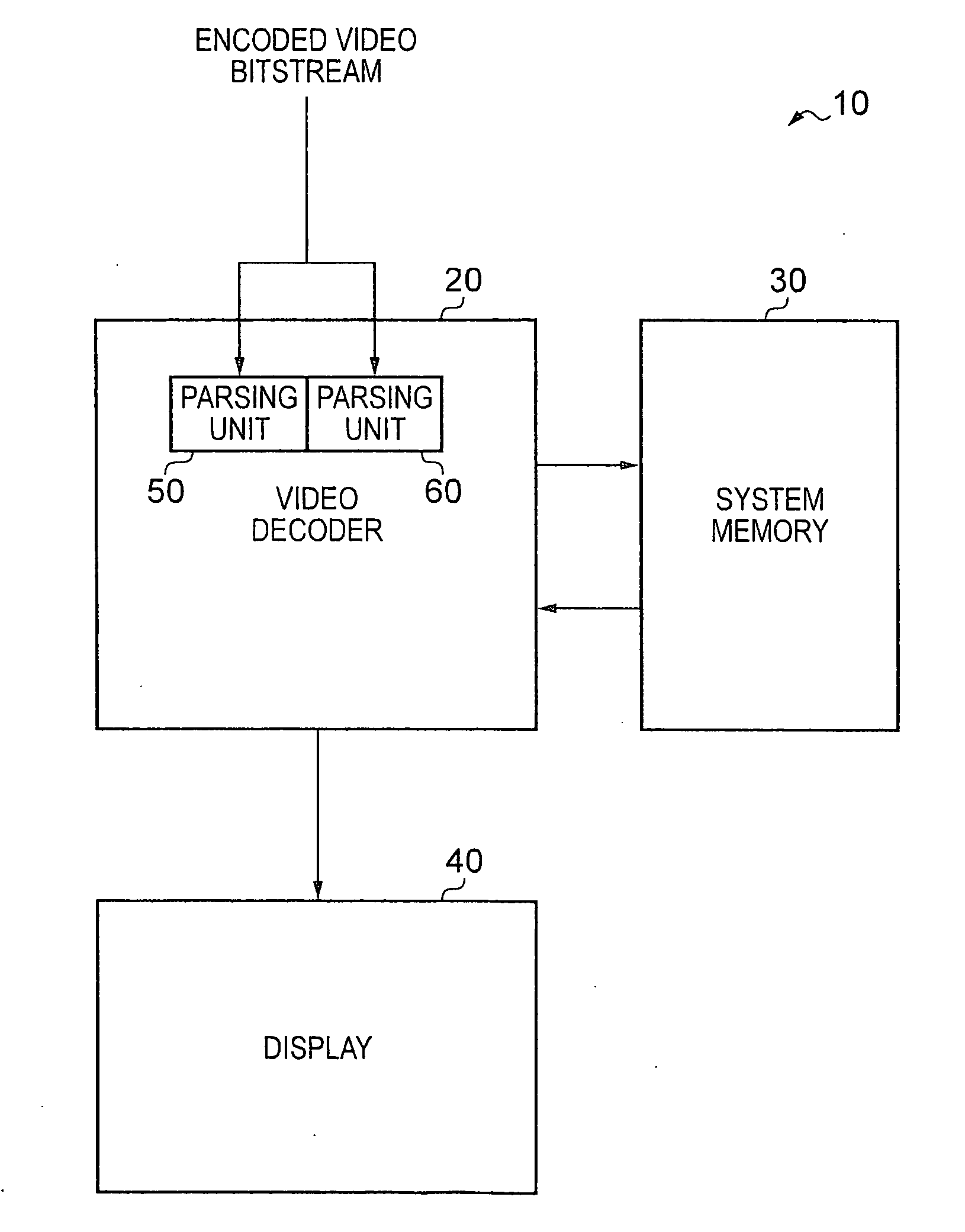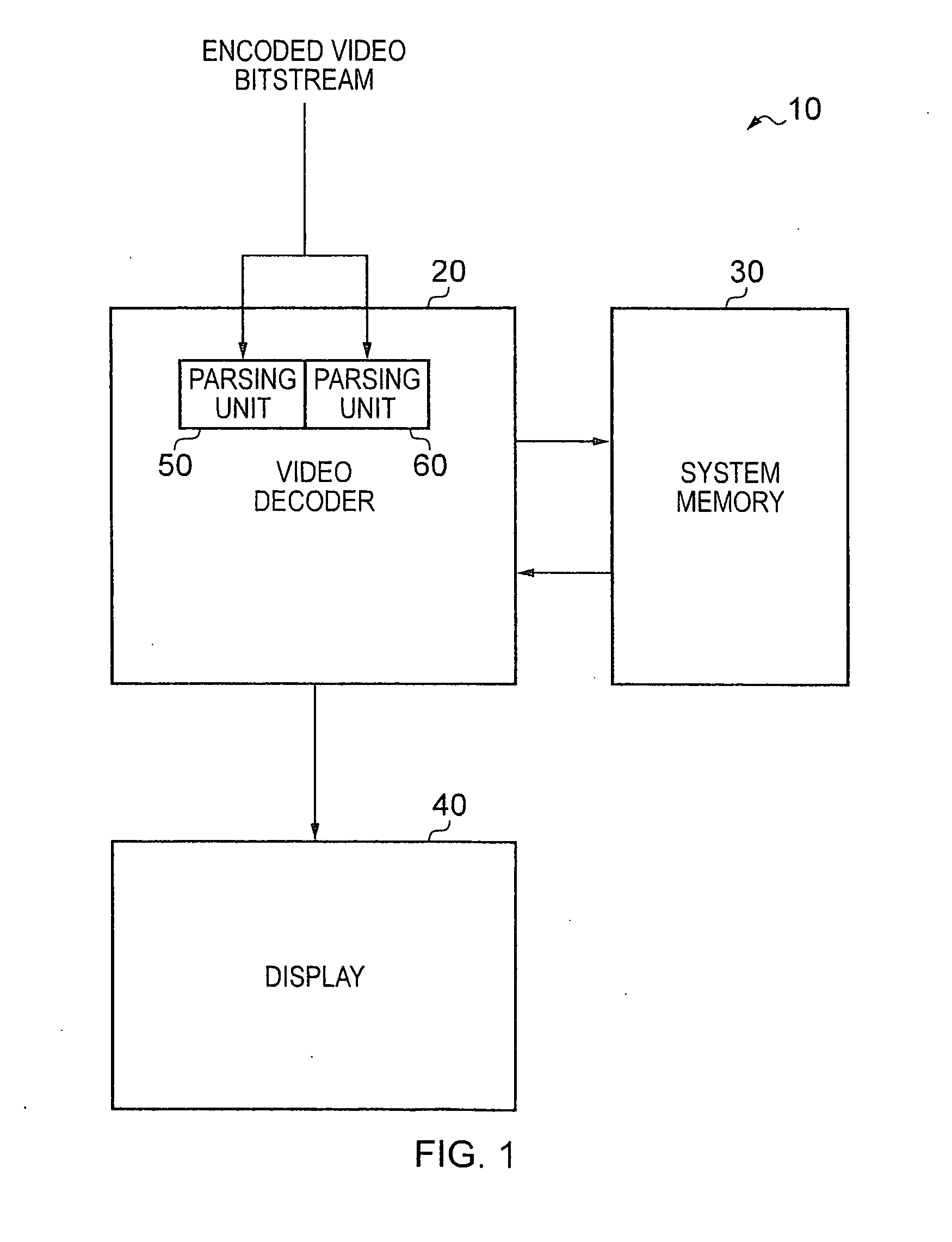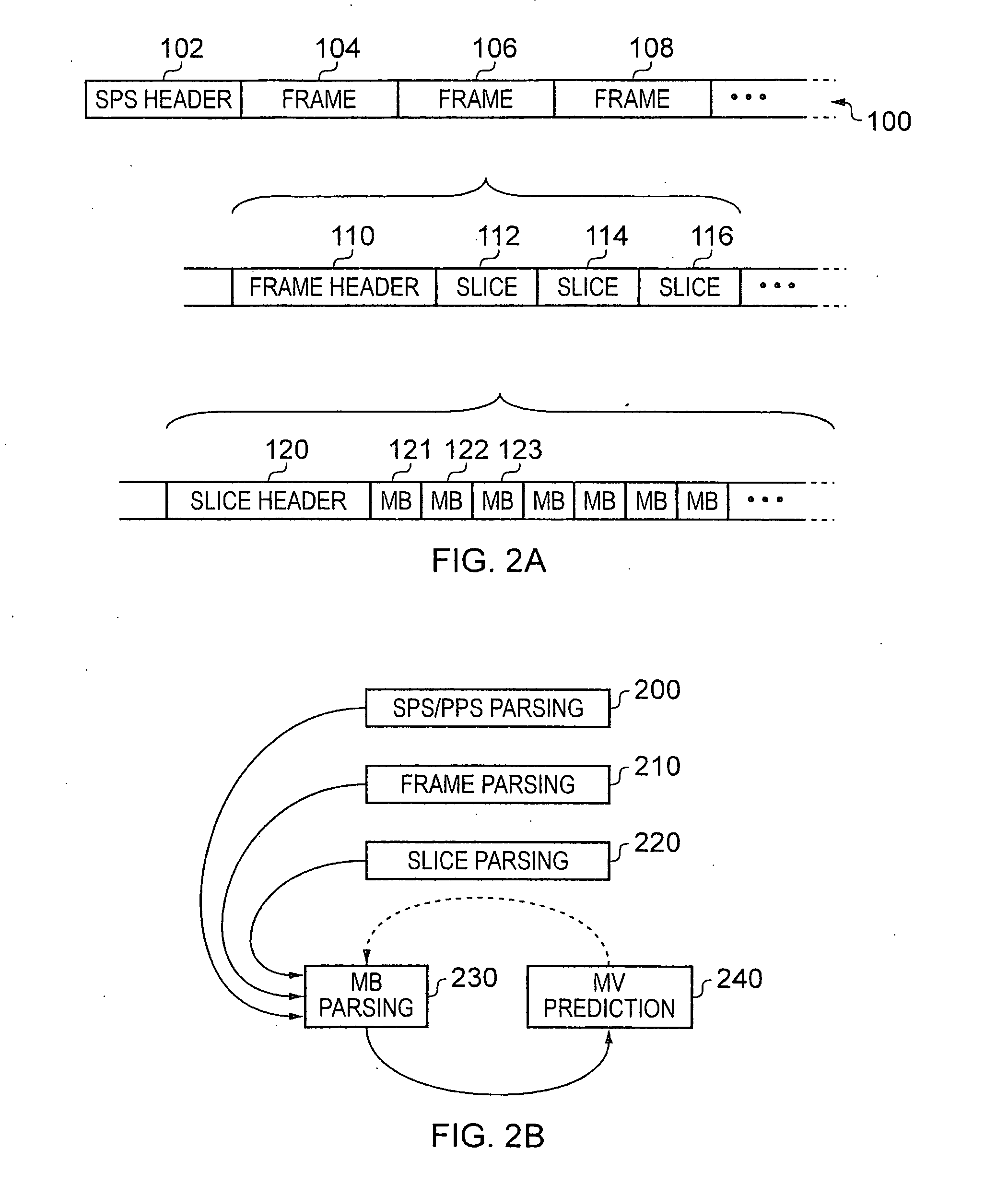[0012]The inventors of the present invention realised that a significant increase in the bitstream rate that can be handled by a
video decoder may be achieved by parallelising the bitstream parsing process in this way. On the one hand, by providing two parsing units the speed of the parse process is almost doubled, meaning that a corresponding doubling of the number of bits per macroblock is possible. On the other hand, because only an extra parsing unit has been added to the video decoder, the increase in
power consumption and
silicon area required is modest. Since both the first parsing unit and second parsing unit parse all frame header information in the video bitstream, each is able to maintain a full parsing decode state entirely independently of the other. In addition, since the vast majority of data in a video bitstream is comprised in the macroblock layer, the allocation of the parsing of the macroblock information of each frame to either the first parsing unit or the second parsing unit means that the speed of the parse process may be nearly doubled.
[0014]It will be appreciated that the
control unit of the decoder could be hard-wired such that the control of the parsing units is predetermined, but in some embodiments said
control unit is configured to control operation of said first parsing unit and said second parsing unit with reference to
control data. Hence the manner in which the parsing units are controlled is readily reconfigurable, providing advantageous flexibility.
[0016]Thus it will be appreciated that the techniques of the present invention are not only applicable to two parsing units, but rather further parsing units may be added in order to further increase the speed of the parsing process. Accordingly in such an arrangement all parsing units parse the frame header information to each derive the parsing state information, but the video
encoder allocates each frame of macroblock information to one of the first, second, third (etc.) parsing units. Thus each parsing unit will only parse macroblock information allocated to it, and will skip macroblock information allocated to another parsing unit. The addition of further parsing units in this way enables still further increases in the speed of the parsing process to be attained, although ultimately the addition of such further parsing units is limited by power-consumption constraints,
silicon-area constraints and so on.
[0019]Whilst the first and second parsing unit could be arranged to perform their parsing operations directly in parallel to one another, in some embodiments said first parsing unit and said second parsing unit are configured to parse said encoded video bitstream temporally offset from one another. This temporal offset between the parsing operations of the first and second parsing units may have a number of advantages, for example in one embodiment said first parsing unit is configured to perform macroblock parsing with reference to prior results of macroblock parsing performed by said second parsing unit, and said second parsing unit is configured to perform macroblock parsing with reference to prior results of macroblock parsing performed by said first parsing unit. The ability for each parsing unit to refer to the prior results of macroblock parsing performed by the other parsing unit may be useful, for example in the case where B frames are being parsed. B frames have a co-located frame
data dependency which typically refers to the previous frame, a given macroblock in a present B frame having such a parsing
data dependency to the macroblock at the same physical location in the previous frame. By temporally offsetting the parsing operations of the first and second parsing units, it may be provided that the results of macroblock parsing in one parsing unit are available for the other parsing unit. Given that such data dependencies refer to a macroblock at the same physical location in a previous frame, the temporal offset between the parsing operations of the first and second parsing units need not be great, it being sufficient for the corresponding previous macroblock to have been parsed and the
relevant information stored in
system memory before the other parsing unit accesses it.
[0021]In some embodiments said control unit is configured to allocate a next frame of macroblock information to a first available parsing unit, said first available parsing unit being either said first parsing unit or said second parsing unit. Whilst it is possible for the video decoder to be configured to allocate each frame of macroblock information strictly alternately to the first parsing unit and second parsing unit, it may be advantageous to allocate the next frame of macroblock information in the encoded video bitstream to whichever parsing unit happens to be available next. For example, if there is variation in the size of the frames, it may be the case that if the first parsing unit is allocated a large frame, the second parsing unit may finish parsing a subsequent frame, whilst the first parsing unit is still parsing that large frame. It may then be desirable to allocate the next frame to the second parsing unit, thus avoiding a period of inactivity before the next frame would otherwise be allocated to that second parsing unit.
[0024]In some embodiments said first parsing unit and said second parsing unit are further configured to perform content dependent parsing. It may be the case that the parsing that is required is itself dependent on the content of the encoded video bitstream. For example, a particular coding in the bitstream may need to be parsed differently in dependence on the outcome of a previous parsing operation. This allows even greater coding density in the encoded video bitstream to be achieved.
 Login to View More
Login to View More  Login to View More
Login to View More 


